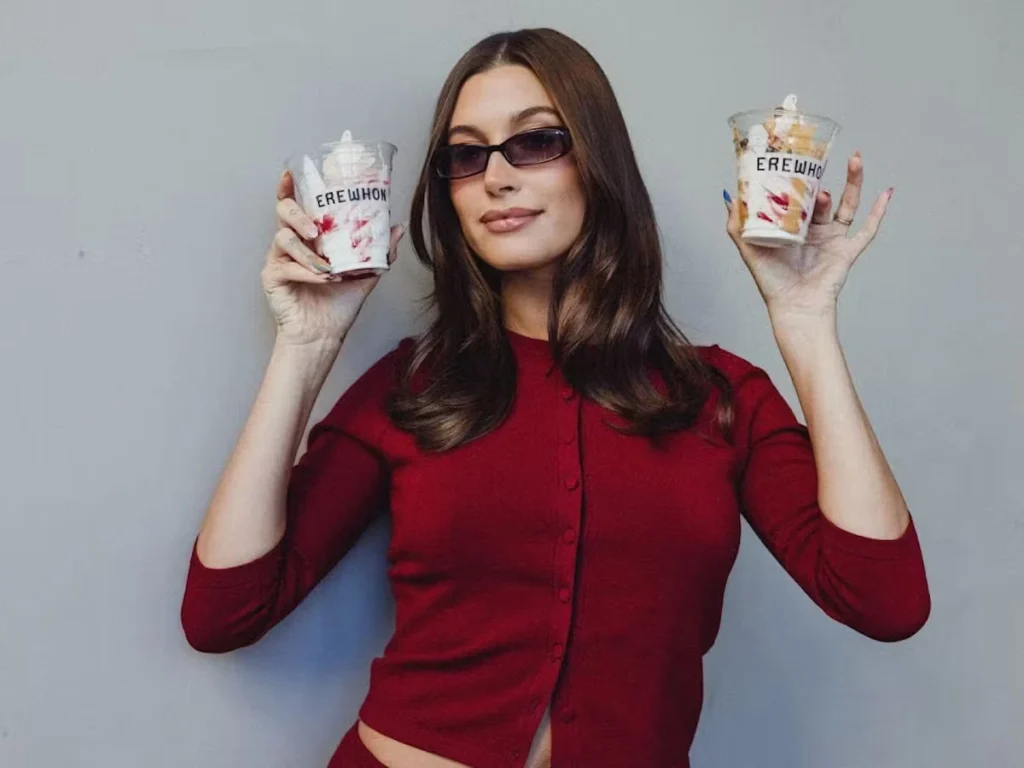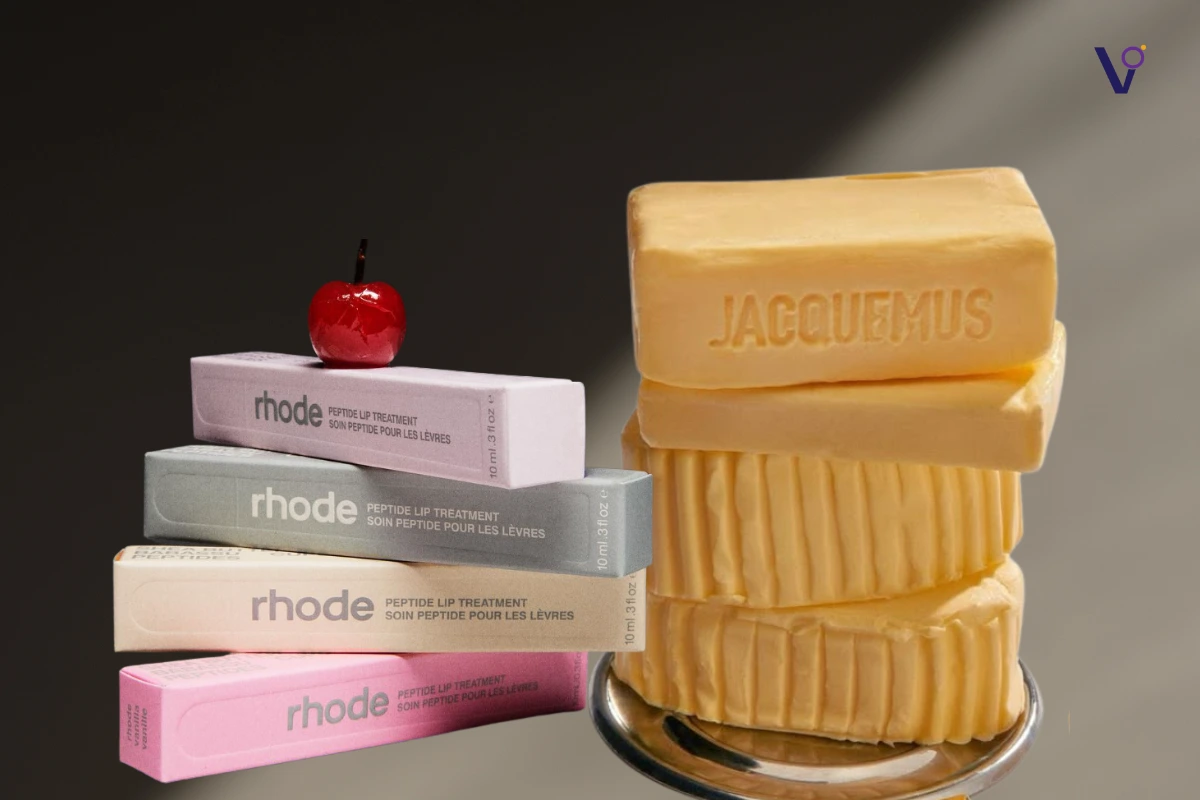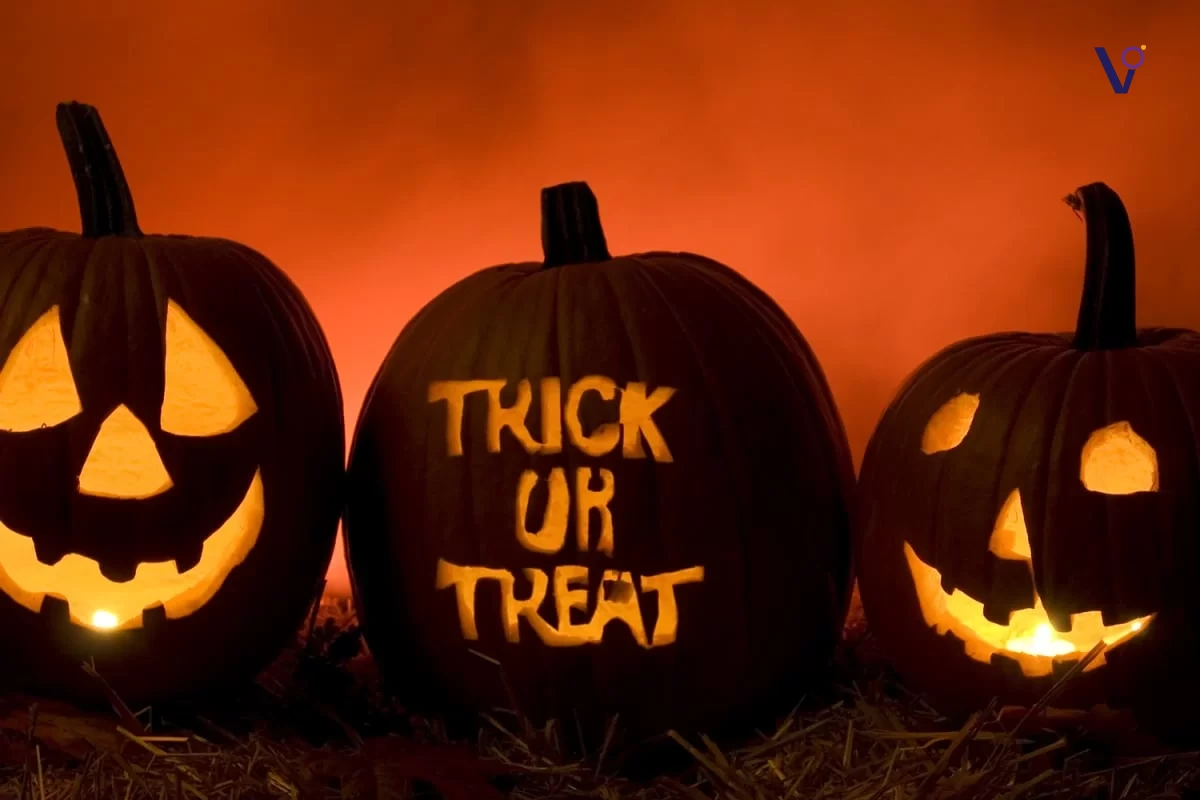In today’s fast-moving world of branding, creative direction isn’t just about looks. It’s about telling stories, building experiences, and connecting with people emotionally. One cool example is how brands now use food in their creative ideas. From groceries becoming luxury items to brands like Rhode Skin integrating food imagery into their product marketing, food has become a status symbol and a powerful branding tool.

This article unpacks how food is showing up in modern branding, with insights drawn from a creative deep dive into some standout examples — including a wildly imaginative cafe in Korea and the carefully curated world of Rhode Skin.
Food as a Modern Status Symbol
There has been a cultural shift happening, and it’s showing up in branding in ways we couldn’t imagine before. Luxury now doesn’t always mean a designer purse or shiny jewelry. Instead, everyday indulgences like a $40 jar of honey or a certain strawberry are becoming new status symbols. Trendy grocery stores like Erewhon aren’t just places to buy organic veggies anymore — they’ve become cultural icons too.

Take Rhode Skin, for example. They partnered with Erewhon to create a special smoothie, mixing skincare and luxury food culture. It’s a smart way to raise a brand’s image without being too flashy.
Other brands are doing the same. Gohar World makes food-inspired accessories, using food visuals for storytelling. Meanwhile, brands like Flamingo Estate and Jacquemus use food images to tap into lifestyle dreams and add meaning to their campaigns.

Especially in women’s brands, food keeps showing up as a theme — whether about taste, beauty, or selling a lifestyle. Food isn’t just something we eat anymore; it’s a styled experience brands use to build stronger emotional bonds.
Building a Visual Language: The Rhode Skin Example
Diving deeper, there’s a clear playbook emerging in how creative direction works, especially for lifestyle brands. The basics are simple: good art direction starts with an insight. It begins by identifying what a consumer wants and translating that desire into visuals and storytelling.
Brands typically approach this in one of three ways:
- Tactical storytelling — showing consumers how to solve a problem.
- Aspirational storytelling — painting a picture of a lifestyle they desire.
- Subliminal association — tapping into feelings and sensations, like hunger, comfort, or indulgence.
Rhode Skin nails this. Rarely do they showcase their products in isolation. Instead, their items appear in carefully styled settings, surrounded by associated objects like martinis or desserts. It’s about crafting a world where the product belongs naturally. A campaign might feature a model on a night out, casually using a Rhode product while sipping a matching cocktail. It feels organic and desirable, and it subtly invites audiences into the brand’s world.
A perfect example of this was the viral Rhode phone cover moment. The brand released a limited-edition phone case designed to hold a tube of their lip treatment — and instantly, it wasn’t just a case, it was an accessory for “the girl who always has her gloss.” Influencers flaunted it during brunches, night-outs, and casual selfies. The product wasn’t promoted as a phone cover alone, but as part of a cool-girl toolkit.
The Role of Objects, People, and Context
One of the key pillars of creative direction is choosing the right objects to accompany your product. For Rhode Skin, this might mean placing a lip treatment beside a martini glass or a spread of strawberries, visually linking skincare with leisure and indulgence.
The second pillar is people. Who represents the brand? What are they doing? How are they styled? Rhode Skin often features women out on the town — creating stories through visuals about how their products integrate naturally into a glamorous, carefree lifestyle.
Finally, there’s the matter of how the product itself is shown. Rhode varies the presentation of its products depending on the context — from editorial-style photography to casual, in-the-moment snapshots. It keeps things fresh while reinforcing the brand’s visual identity.
When brands align these three elements — objects, people, and product styling — it forms the foundation for a strong creative direction playbook.
Beyond Social Media: Applying Creative Direction Everywhere
It’s not just about Instagram grids and TikTok videos. True creative direction extends across every brand touchpoint — from advertising to packaging to in-store experiences.
A smart way to study how brands are applying this is by checking platforms like Foreplay, where you can see every ad a brand is running. Scrolling through Rhode Skin’s campaigns, you’ll spot recurring themes: scale manipulation, human-centric storytelling, and context-rich product placements.
Even their emails follow this philosophy. Instead of the usual “Buy Now” messages, Rhode Skin sends out campaigns like “Late Nights with Rhode” — featuring a night out story, a model, the products she uses, and even what she’s wearing. It’s a subtle but effective way to make their marketing feel personal and immersive.
The goal isn’t just to drive immediate sales but to build a consistent, aspirational brand world. Whether it’s an ad, an email, a product mailer, or an event activation, each element ties back into a central narrative.
Lessons from Korea: Nudake and Gentle Monster’s Viral Destination
To break out of creative ruts, it’s helpful to look beyond your usual sources of inspiration. One fascinating example comes from Korea, where sunglass brand Gentle Monster has a cafe called Nudake. It’s not an average pastry shop.
At Nudake, everything — from the cakes to the tables — is part of an elaborate visual world. Think croissant-shaped tables, statues, and pastries styled to look more like art installations than desserts. It’s bizarre, bold, and deeply shareable. By transforming everyday objects like bread into sculptural masterpieces, they’ve created a viral destination where art direction meets food culture.
This approach reflects a growing trend: brands aren’t just selling products. They’re selling immersive experiences.
Wrapping It Up: Why Creative Direction Matters More Than Ever
In a world where consumer attention is scarce and competition is fierce, building a strong, consistent brand world is what separates memorable brands from forgettable ones. The smartest creative directors today are leaning into unexpected motifs — like food — to spark emotion, build associations, and offer lifestyle aspirations.
Examples like Rhode Skin, Flamingo Estate, and Nudake show how powerful creative direction can be when done with intention. It’s not about following trends but about building a world your customers want to step into.
It ensures brand visuals, storytelling, and marketing remain consistent, emotionally engaging, and culturally relevant — strengthening consumer connection, building identity, and making products part of desirable lifestyle narratives.
No. Branding defines identity, values, and positioning, while creative direction visually interprets and expresses those brand elements through campaigns, storytelling, design, and content to maintain emotional audience connections.
Creative direction aligns strategy, brand storytelling, design, and visuals to create emotionally engaging experiences across campaigns, marketing, and content, ensuring everything speaks to the target audience’s desires.



